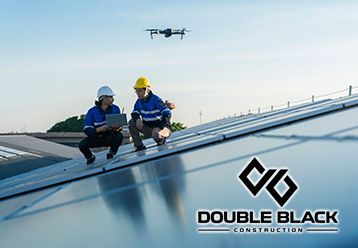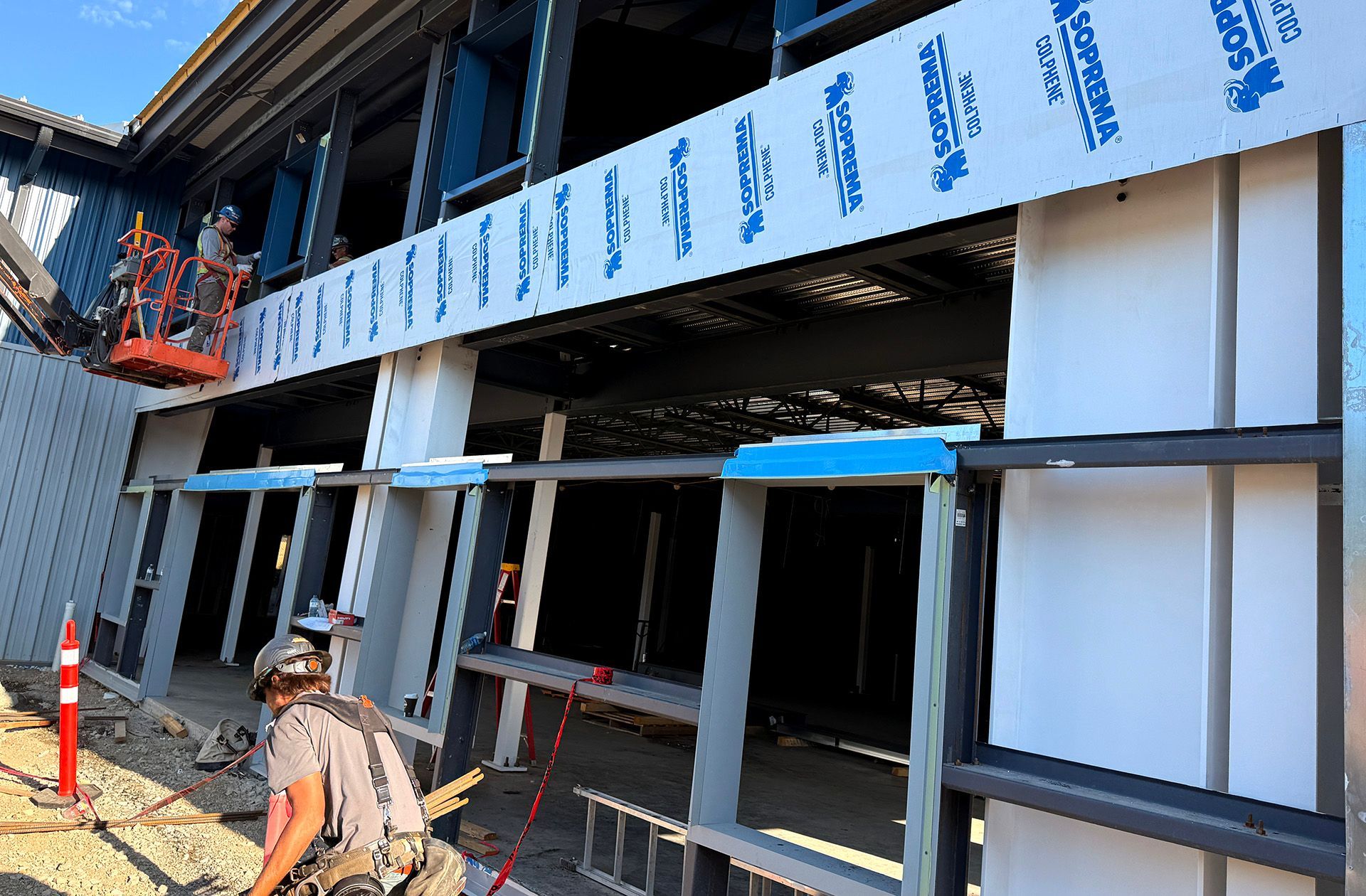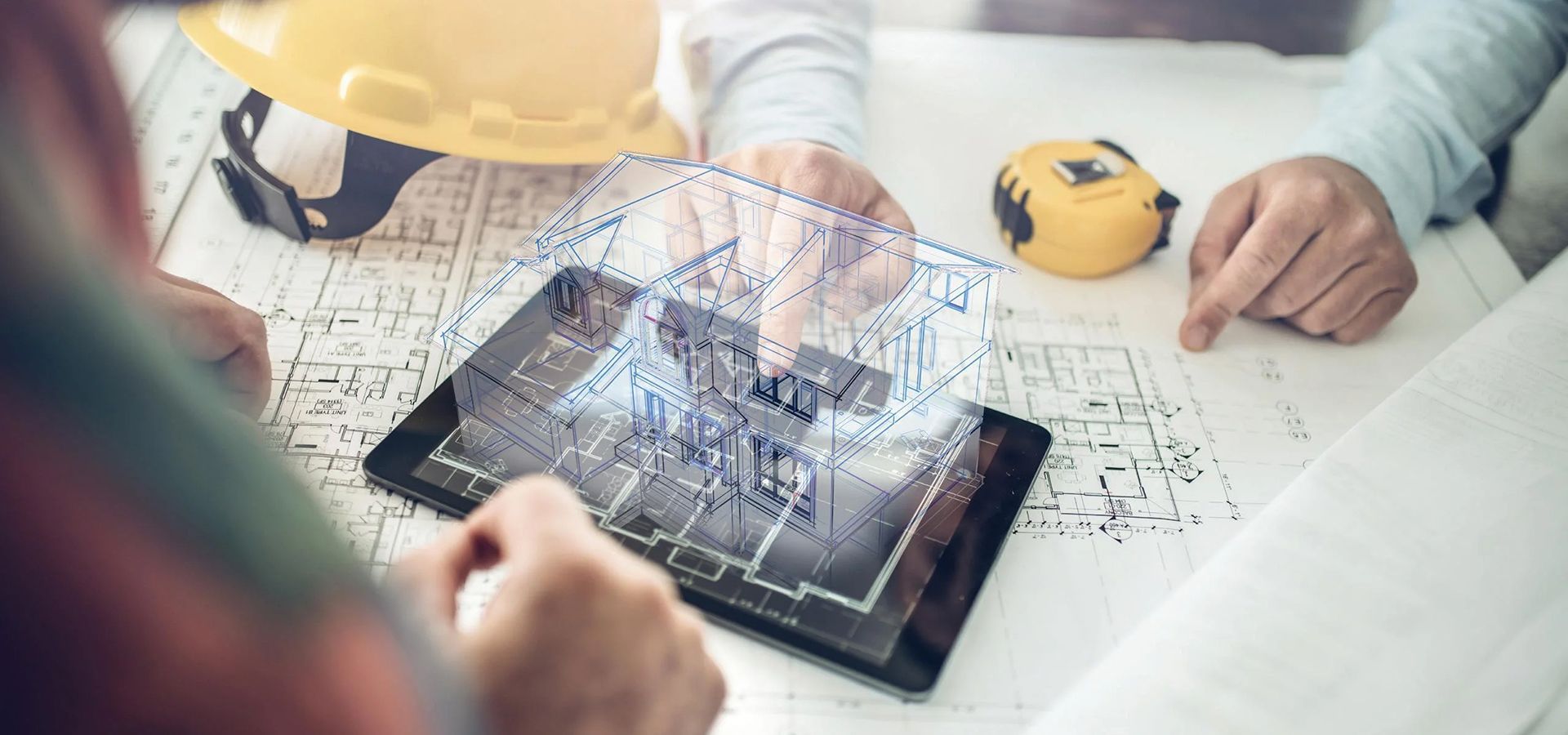How Innovation is Built into Pre-Engineered Building Projects
Frank Melo • May 22, 2024
A two-part feature exploring how Double Black Construction combines modern technology with their old-school work ethic to create building engineering that stands the test of time.
Innovation has transformed almost every industry, especially when it comes to digital and cloud-based tools for project management and team communication. Steel construction for industrial and commercial buildings is no different. Engineering techniques and materials have likewise changed how buildings get completed. Technological advancements have led to improvements in speed, precision and durability of construction, while also advancing productivity and efficiency.
Double Black Construction has been quick to adopt intelligent tools and emerging technologies to improve the quality of the final construction they deliver to clients. Regardless of the final purpose or industrial need, the company remains at the intersection of the best in technology and human effort. Double Black Construction combines the latest innovation with their relationships to the most reputable manufacturers and talented professionals (architects, engineers and skilled tradespeople) to deliver your ideal pre-engineered building solution.
Embracing the Best Improvements in Hardware and Software
Our construction teams employ the latest best-in-class developments within the building industry on every project. From hardware, such as pre-engineered materials and tools, to software applications, Double Black Construction has continually been at the leading edge of engineering advancements to benefit your construction project.
THE HARDWARE
Pre-Engineered Steel Construction Materials
Pre-engineering’s innovative method of construction changed commercial and industrial building forever. Premade steel components and modular panels allow large buildings to be made faster and more affordably than by using traditional materials, such as brick and mortar. Metal buildings are generally 30% less than the price of traditional construction and take about as third as long to complete. They’re also much more durable than with using wood.
Pre-engineering is a modular system of building that involves custom manufacturing metal panels and framing sections at an offsite location in advance. These pre-welded, pre-cut and pre-hole punched steel components are then transported in and fixed to the concrete foundation and steel skeleton of beams, girders and supports. As both a construction method and as building materials, cold-formed metal components reduce construction times while still providing adequate insulation, aesthetic appeal and architectural design flexibility clients want.
Digital and Robotic Tools
From hand tools the tradespeople use every day to more complicated measuring and inspection devices, taking advantage of new technology allows construction to be more precise and accurate while simplifying processes. Complex, over-engineered and interconnected systems generate many (sometimes unexpected or counterintuitive) vulnerabilities to weather. As commercial buildings get larger and more sophisticated, digital tools reduce margins for error and prevent structural failure under extreme stresses. Technology obviously reduces the need for labour while assuring quality control for two of the most important purposes.
- Measurement: More precise digital and laser tools (for surveying and for measuring distances and levels) create more accuracy on builds that take place over larger sites. They also mean tighter seals and joints that prevent water seepage and allow for more energy-efficient, controlled interior environmental conditions. Hyperspectral imaging and digital sensors are used for detecting chemicals and toxic gasses. Human senses can only be so good, so more exact measuring systems step in to provide a higher level of construction quality and worker safety.
- Inspection: Digitally precise optics, often built into portable tablets and dedicated hand-held devices, are used to inspect work and ensure a higher level of fit and a better-quality final building. Accurate measurement is vital to properly aligning materials, fitting them perfectly and preventing waste (that old “measure twice and cut once” mentality has never been more important in keeping costs down and increasing efficiency). Drones are also used to get overhead views and a final look at the roof and wall joists before the building goes into operation.
- Security: Loss of equipment and material is an ever-present threat that cost Canadian construction companies and their clients $1 billion in 2021. Theft prevention and jobsite protection is a growing concern that drives up prices and delays completion times. Photography is playing a larger role in construction; 24-hour cameras provide jobsite protection and security. Cameras are also used for inventory and loss control alongside radio frequency identification (RFID), near-field communication (NFC) and barcode tagging to manage and track supply chain, reduce project costs, ensure delivery times and to prevent theft.
Coming Up Next: Our Software Tech
Read our next article where we explore the software side of technology. Double Black Construction continually adopts and leverages the latest and best in emerging technologies to help set them apart in the commercial construction space. Intelligent application of technology delivers and safeguards the reputation of their industrial manufacturing partners. When you need to erect a pre-engineered steel building, make us your first choice.
Speak with us at (833) 322-2722
or by email at info@DoubleBlackConstruction.com and we'll provide you with a free consultation and quote. Submit your drawings and get a free quote online!
About the author:
Frank Melo
has a construction civil engineering technology and business background with over 25 years of experience as a business owner and contractor. He was born and educated in London, Ontario and now divides his time between projects primarily in Ontario and British Columbia. He can be contacted at Double Black Construction at (778) 951-4766
or by email at frank@doubleblackconstruction.com
or through LinkedIn.






